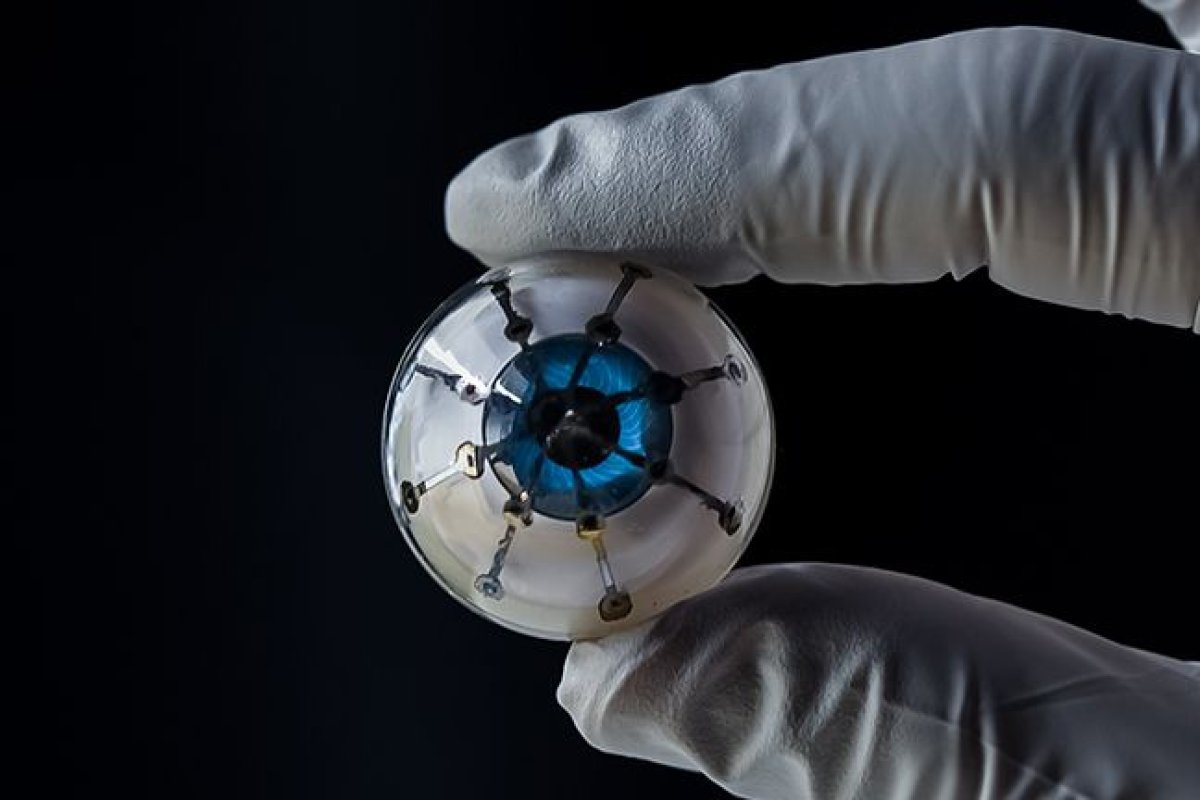A bionic eye prototype is in the works, thanks to a new 3D-printed device.
Researchers at the University of Minnesota were able to 3D-print on a hemispherical surface an array of light receptors. Published in the journal Advanced Materials on Tuesday, the study is the first to reveal a way to create a 3D-printed bionic eye with this method.
"Bionic eyes are usually thought of as science fiction, but now we are closer than ever using a multi-material 3D printer," said Michael McAlpine, a co-author of the study and professor at the University of Minnesota, in a statement.
To show they were able to print on a curved surface, the scientists used a hemispherical glass dome as their base. The first ink they used in their 3D printer was made of silver particles that, when dispensed, stayed in place and dried uniformly instead of running down the dome's sides. To print the photodiodes, which convert light into electricity, the team used semiconducting polymer materials. It took the team only about an hour to print the entire array of light receptors on the surface.
"My mother is blind in one eye, and whenever I talk about my work, she says, 'When are you going to print me a bionic eye?'" McAlpine said. Now, it seems that might just be a possibility.
The researchers plan to next print even more light receptors onto the surface so that the eye will be more efficient. They also hope they can figure out how to print on a soft surface so they can print on a real eye instead of the glass dome. The discovery could help people who have low vision see better, or those who are completely blind would be able to see.

"We have a long way to go to routinely print active electronics reliably, but our 3D-printed semiconductors are now starting to show that they could potentially rival the efficiency of semiconducting devices fabricated in microfabrication facilities," McAlpine said. "Plus, we can easily print a semiconducting device on a curved surface, and they can't."
McAlpine and his team have made other bionic body parts in the past, including a bionic ear. They've also created artificial organs for surgeons to practice on, as well as a bionic skin and materials to potentially use to help people with spinal cord injuries regain function, such as cells and scaffolding.
Uncommon Knowledge
Newsweek is committed to challenging conventional wisdom and finding connections in the search for common ground.
Newsweek is committed to challenging conventional wisdom and finding connections in the search for common ground.
About the writer
To read how Newsweek uses AI as a newsroom tool, Click here.








